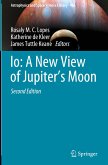
Gebundenes Buch
2. Aufl.
14. Mai 2023
Springer / Springer International Publishing / Springer, Berlin
978-3-031-25669-1
| eBook, PDF | 121,95 € |
eBook, PDF
13. Mai 2023
Springer International Publishing
Broschiertes Buch
Oceans in Space
Softcover reprint of the original 1st ed. 2013
23. August 2016
Springer / Springer New York / Springer, Berlin
978-1-4939-4212-1
Gebundenes Buch
Oceans in Space
2013
19. Juli 2013
Springer / Springer New York / Springer, Berlin
80035347,978-1-4614-7472-2
| eBook, PDF | 32,95 € |
Ähnlichkeitssuche: Fact®Finder von OMIKRON

